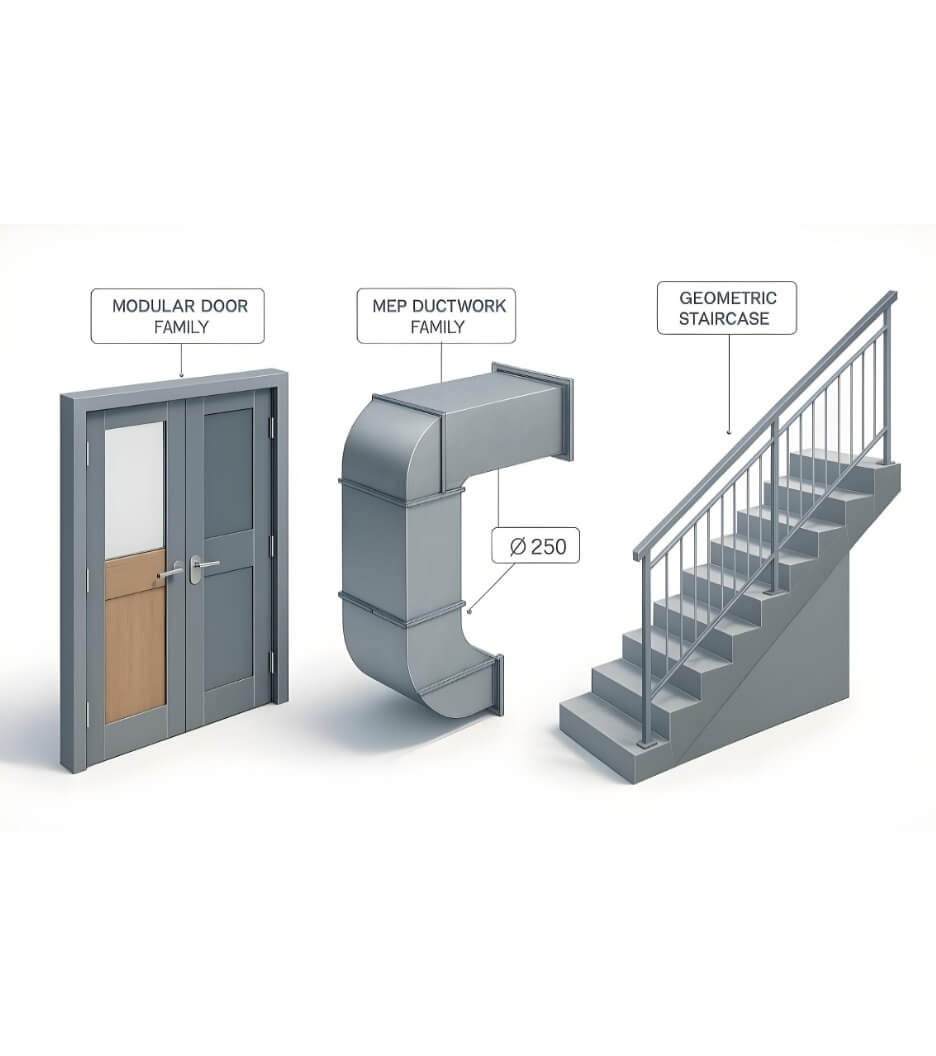 Rahul Dogra
Rahul Dogra
Key Difference Between BIM and Revit
 Rahul Dogra
Rahul Dogra

Send Us Your Requirement
Are BIM and Revit the same? Or BIM is a software?
If you are into the AEC industry, BIM and Revit are the common terms that indeed have crossed into the conversation. These two terms carry great significance in the architecture and construction industry. However, they have been the most confusing terms and have developed a few myths over the years. Professionals in the AEC industry may know a significant difference or can easily explain it as they constantly work with BIM and Revit. However, there is a need for clarity among other sector professionals who opt for BIM services for various projects. This blog explains BIM and Revit in detail while clearing out the myth fog between the two. Continue reading further.
The AEC industry has witnessed many transformative technologies that have shaped the industry and given a new curve for architects, engineers, and professionals to work in. Given the benefit of emerging innovations and technologies, the traditional work approach for construction projects is entirely altered with the adoption of building information modeling services, as the technology has offered various benefits to enhance accuracy, reliability, and efficiency in construction projects. Additionally, the lack of collaboration and communication is well covered by BIM services, making it easier for AEC professionals to work in coordination.
In fact, BIM caters to different projects, regardless of their type and size. Since the inception of BIM technology, it has been well-perceived. However, the need for more awareness has been a central confusion. Implementing the BIM process in projects requires independent solid software, which can make the BIM process easier. Here comes the introduction of Revit, which started a long debate about BIM and Revit. One of the major problems between the two terms is that they serve the same objective and result. However, thinking that BIM and Revit are the same is completely wrong. BIM and Revit are different, simple yet complex topics that must be deeply understood. Revit and BIM are often interchangeable in the industry nowadays; however, the impression of this has led to significant confusion. Let’s explore the core properties of architectural BIM services and Revit.
Enhance Next Construction Projects with Accurate BIM 3D Modeling
Connect Today
What is BIM?
In the realm of architecture and the construction industry, technologies have paved the sector and have drastically changed the working approach. As the technological revolution hit the industry, BIM services were introduced to simplify the complex construction process. To simply understand the revolution, BIM is a digital prototype of future construction and architecture that enhances collaboration and communication while streamlining the workflow for AEC professionals. Compared with the traditional work approach, architects and engineers used to draw or sketch the project briefs. However, times have changed as the complications and room for errors are eliminated- thanks to BIM technology.
Building information modeling is a model-based methodology process that curates data-rich and intelligent 3D models of the entire project. The 3D model of the building design is enriched with all the necessary information that helps AEC professionals understand the project in depth. Moreover, architectural BIM services ease the complex process, enhance collaboration, maintain effective communication, offer the minor details, and reduce errors, cost, and time. To clear the fog, BIM services are known for its methodology, benefits, and ease of carrying out the construction process at an early stage.
Additionally, BIM modeling services also cater to processes during and after the construction is completed. It is one of the most reliable and effective work approaches or methodologies for the facility management process. The entire 3D data-rich model includes information regarding material data, cost estimations, project schedules, clash detections, and more. With the implementation of BIM services in any construction project, AEC professionals can design, build, and operate the project faster, efficiently, and accurately, resulting in minimal reworks.
What is Revit?
As discussed about BIM services, the entire BIM process is operated effectively by software that enables professionals to take advantage of the software’s features and other tools to enhance the model. The software for BIM is Autodesk’s Revit. Yes! Revit is software for architectural BIM services that provides capabilities for architectural, mechanical, and electrical systems, which are the prime components of the BIM 3D model.
While curating a data-rich 3D model, Revit and other software are used by designers to create, design, and stimulate the project design with essential information. Revit is a software that offers a platform for architects and designers to create BIM models enriched with data. As a matter of fact, Revit, as a software technology, supports various disciplines that are necessary for BIM services. Furthermore, BIM in Revit software offers features like parametric modeling, family creation, model sharing, clash detections, scheduling, and more. All these are catered in Revit software, making it a significant tool for carrying out BIM workflows. In the tech-driven world, Revit software continues to evolve with new features and more, as it is considered one of the mediums where BIM is created or accessed. Revit offers a few benefits that make it the best BIM software.
- Automation
- Collaboration
- Energy Analysis
- Construction Documentation
- Project Management
- Software Interoperability
Major Difference – BIM and Revit
As discussed in detail regarding architectural BIM services and Revit, By their core objectives, it is understood that BIM is a methodology and Revit is a software for BIM services. BIM creates a digital model of the entire project, containing all the information and components. On the other hand, Revit is a BIM software by Autodesk that is used to create accurate 3D models and offers various features and tools. BIM and Revit cannot be separated or cannot be considered the same since the core properties of BIM and Revit are different. Moreover, the BIM and Revit difference lies in the AEC project’s core properties, function, use, and application. Furthermore, BIM services have a bright future due to the rise in technology. Similarly, Revit as a software constantly upgrades with the emergence of new technology.
In the End
Questions asked at the beginning of the article can be answered in a straightforward phrase: BIM and Revit are entirely different in the AEC industry. One cannot function without the other. BIM services are crucial in the modern architecture and construction industry, and to cater to the entire 3D model, Revit software supports and offers a variety of features that can be beneficial for the project model and enhance the accuracy of the design. Hence, the differences between BIM and Revit are crucial to understanding and clarifying the confusion between the two terms.


